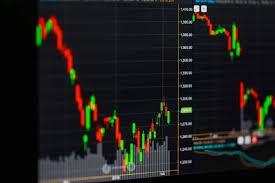
Mastering Forex Trading: The Best Strategies Revealed
When it comes to trading in the foreign exchange (Forex) market, having a solid trading strategy is essential for success. Many traders, especially beginners, struggle to find the right approach that aligns with their goals and risk tolerance. In this article, we’ll explore some of the best Forex trading strategies that can help traders of all levels maximize their profits and minimize their risks. One key resource for traders is best forex trading strategy https://forex-vietnam.net/, which offers valuable insights and tools for Forex enthusiasts.
Understanding Forex Trading
The Forex market is the largest financial market in the world, with a daily trading volume exceeding $6 trillion. Traders buy or sell currency pairs with the goal of making a profit from fluctuations in exchange rates. To navigate this complex market successfully, traders must implement effective strategies.
1. Trend Following Strategy
One of the simplest yet most effective trading strategies is the trend following strategy. This approach involves identifying the direction of the market trend—upward, downward, or sideways—and trading in that direction. Traders can use technical indicators such as moving averages to help determine the trend. For example, if the price is above a moving average, it indicates an uptrend, and traders may look to buy. Conversely, if the price is below the moving average, it signals a downtrend, leading traders to look for selling opportunities.
2. Breakout Strategy
The breakout strategy takes advantage of price movements that occur when the price breaks through a support or resistance level. Traders identify key levels where the price has struggled to move beyond and place trades when these levels are broken. The idea is that once a price breaks out, it continues to move in that direction for some time. Successful breakouts can often lead to significant price movements, providing ample profit opportunities.
3. Scalping
Scalping is a short-term trading strategy focused on small price changes. Scalpers aim to profit from small market movements by executing numerous trades throughout the day. This strategy requires quick decision-making and often involves the use of high leverage to maximize potential gains. It’s essential for scalpers to stay updated with market news and events, as these can quickly influence currency prices.
4. Carry Trade

The carry trade strategy involves borrowing money in a currency that has a low interest rate and investing it in a currency with a higher interest rate. This strategy allows traders to profit from the interest rate differential between the two currencies while also gaining from price appreciation. While the carry trade can be lucrative, it also carries the risk of currency fluctuations that can offset the potential gains.
5. Fundamental Analysis Strategy
Fundamental analysis involves evaluating economic indicators, political events, and financial reports to gauge currency value. Traders who employ this strategy focus on economic data releases, such as GDP growth, employment rates, and inflation reports, to make informed trading decisions. This approach provides a broader perspective, allowing traders to understand the market dynamics beyond technical indicators.
6. Position Trading
Position trading is a long-term strategy where traders hold positions for weeks, months, or even years. This approach is based on fundamental analysis, where traders analyze economic trends and indicators to predict long-term currency movements. Position traders often use wider stop-loss orders to avoid being stopped out by short-term volatility.
Combining Strategies for Greater Success
While each of these strategies can be effective on their own, many successful traders combine elements of multiple strategies to create a personalized approach. For example, a trader may use fundamental analysis to identify potential trades but rely on technical indicators for entry and exit points. This hybrid approach allows traders to adapt to various market conditions and enhance their overall trading performance.
Risk Management: Key to Sustained Success
No trading strategy is complete without a solid risk management plan. Traders should determine how much capital they are willing to risk on each trade, typically no more than 1-2% of their trading account. Implementing stop-loss orders can help limit potential losses by automatically closing a trade when the price reaches a specified level. Additionally, maintaining a favorable risk-reward ratio is essential—traders should aim for rewards that are at least two times the amount they are risking on a trade.
Final Thoughts
Finding the best Forex trading strategy requires time, practice, and continuous learning. Traders must experiment with different approaches and adjust their strategies based on market conditions and personal preferences. By combining effective strategies with a solid risk management plan, traders can enhance their chances of becoming successful in the dynamic world of Forex trading. Always remember that patience and discipline are key virtues in achieving long-term success in Forex.
